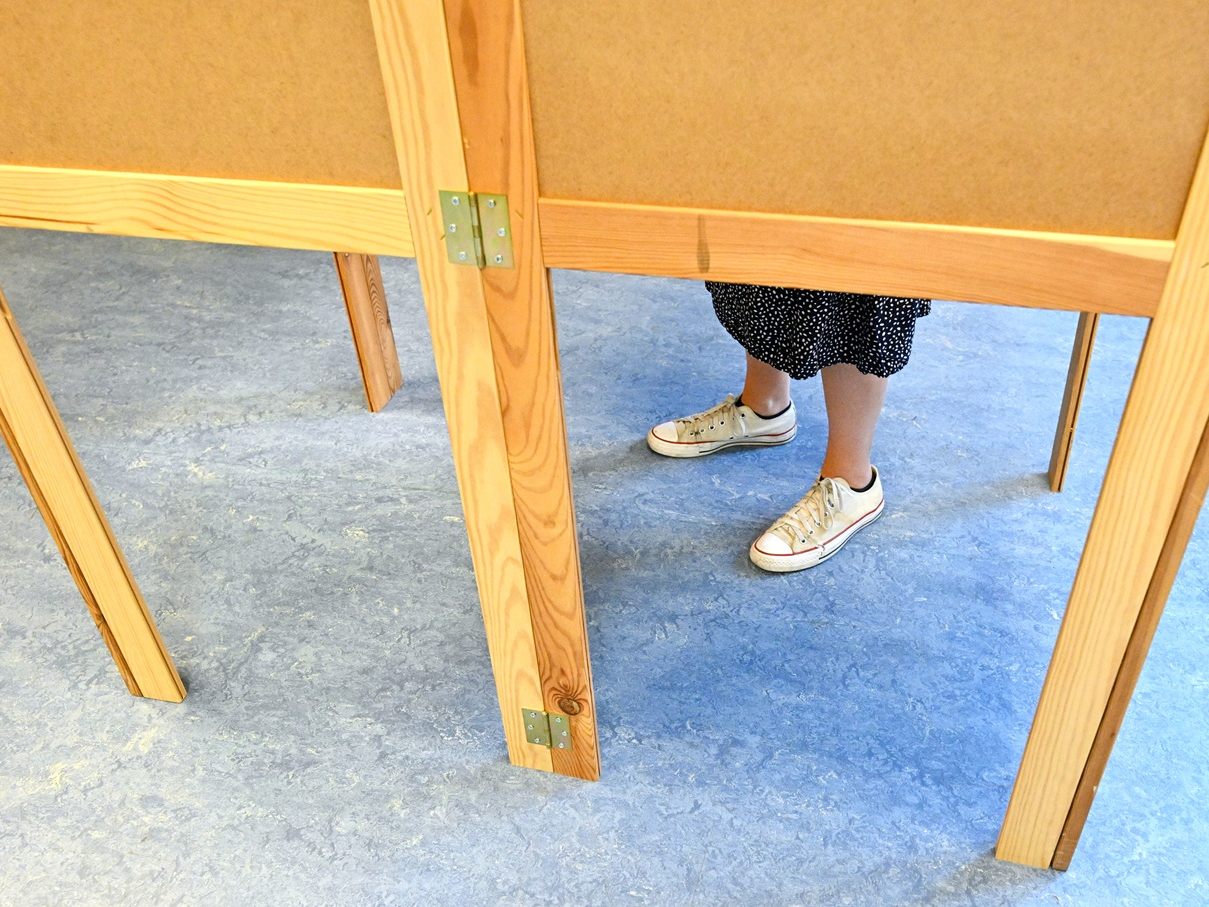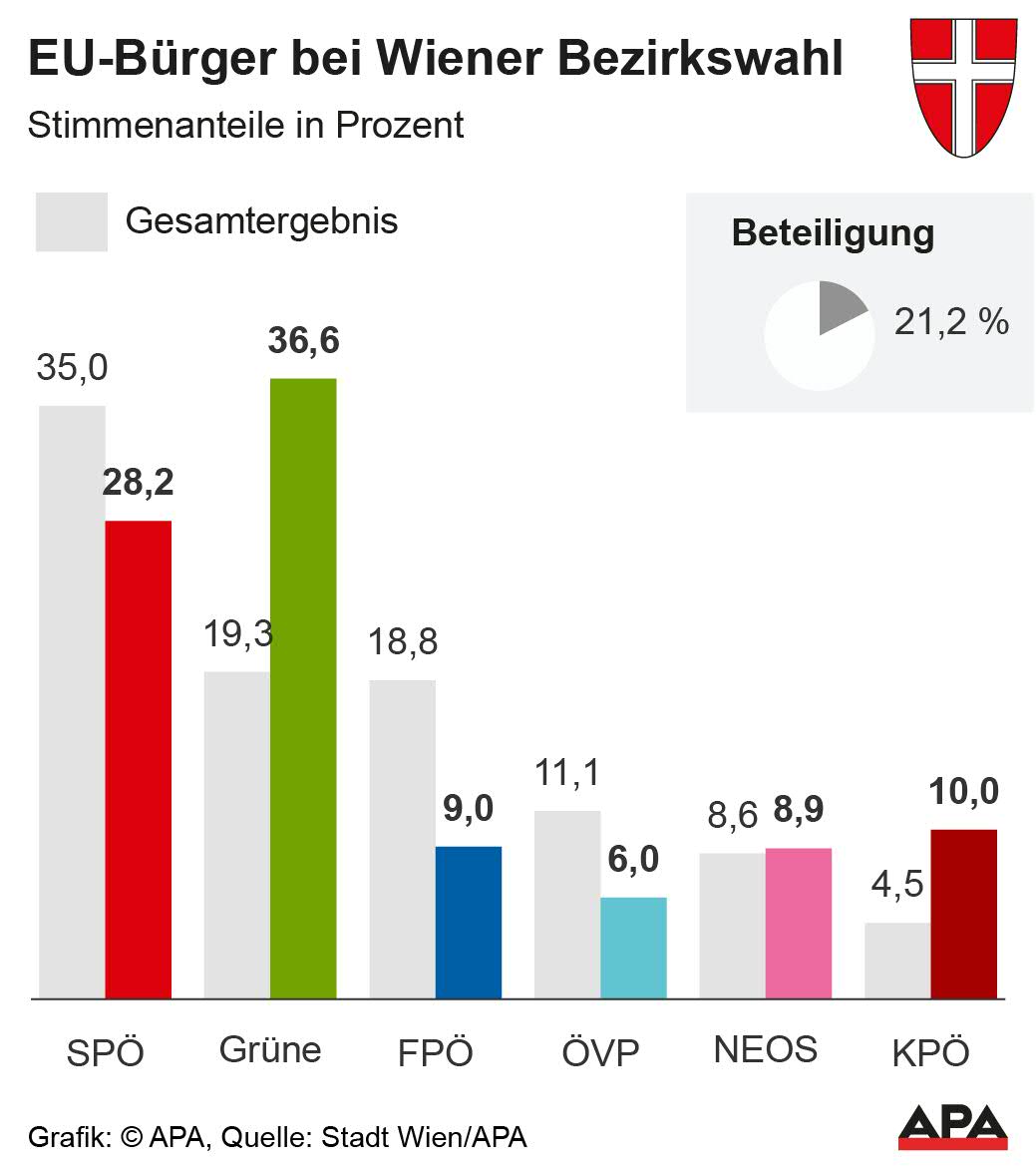How EU Foreigners Decided in the Vienna District Election

The Europeans living in Vienna primarily voted for the Greens in the district council elections. However, voter turnout among EU citizens was low at 21.2 percent, as an APA analysis of the results shows. Besides the Greens, the KPÖ also benefited significantly from the EU votes. SPÖ, FPÖ, and ÖVP are significantly below their overall results in this voter group.
Vienna as an Exception
Citizens of other EU countries are allowed to vote in European elections and municipal council elections in Austria. However, Vienna is an exception in this regard: Because the Vienna municipal council election is simultaneously a state election, EU citizens without Austrian citizenship do not have voting rights here. Therefore, they are only allowed to participate in the district council elections in the 23 Viennese districts. They receive a separate ballot, and their election results are evaluated separately.

Theoretically, this would be a strong voter potential of more than a quarter of a million people. In reality, however, voter turnout among Viennese with EU citizenship is low. Even on Sunday, only one in five participated.
36.6% of EU Votes to Greens
The Greens and the KPÖ benefited the most from the EU votes. The Greens received 36.6 percent of the EU votes, significantly more than the 19.3 percent of votes in the overall district council election results. Thus, every seventh Green vote in the district council election comes from EU foreigners. The KPÖ performed more than twice as well in this voter group with ten percent compared to the overall result (4.5 percent).
NEOS Similar to Overall District Election Result
The NEOS are in line with the national trend: 8.9 percent of the EU votes correspond almost exactly to the overall Vienna result of 8.6 percent.
The other parties perform significantly worse: The SPÖ received only 28.2 percent from EU citizens (overall result: 35 percent) and thus ranks behind the Greens. The FPÖ only reaches nine percent here (18.8 percent) and the ÖVP six percent (11.1 percent). Thus, the FPÖ ranks behind the KPÖ among EU citizens, and the ÖVP is even in last place in this voter group behind KPÖ and NEOS.
(APA/Red)
This article has been automatically translated, read the original article here.





